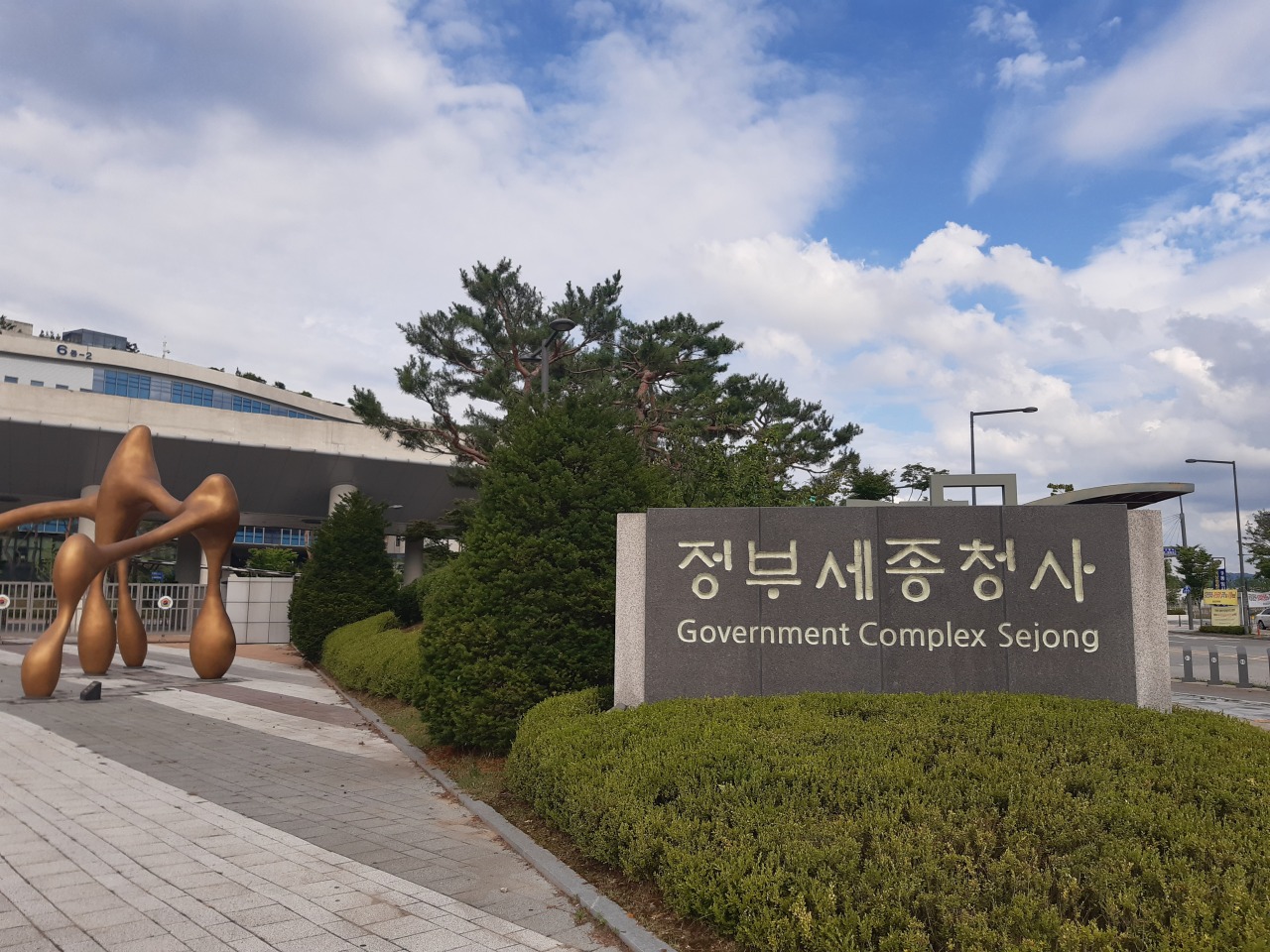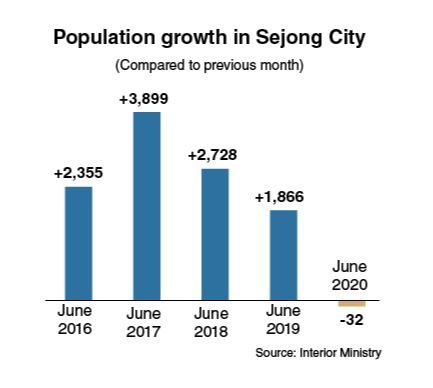[News Focus] Sejong sees population fall for 1st time in history
South Korea’s population declines 12,000 in 7 months
By Kim Yon-sePublished : July 2, 2020 - 10:48

SEJONG -- The population of Sejong declined last month, which marked the first time in eight years since the administrative city was established as one of the eight major cities in South Korea in July 2012.
According to data held by the Ministry of Interior and Safety, Sejong posted 345,341 registered residents as of June, down 32 compared to a month earlier.
Though the diminution may be imperceptible, the city’s demographic changes for this year suggested the possibility that its population could be stalled for a certain period.
After reaching plus 1,753 in January 2020, the growth of Sejong population has continued to slow -- an increase of 1,460 in February, 1,004 in March, 424 in April and 157 in May.
The situation is noteworthy, given that Sejong has posted the highest growth in resident tally among South Korea’s 17 administrative divisions over the past few years. Compared to 185,212 in June 2015, its population has surged by 86.5 percent in only five years. It has also climbed by 25 percent under the Moon Jae-in administration.
A real estate agent picked spiraling apartment prices in the city for a main factor hampering an influx of households from other regions. “Tough real estate regulations and primary benefits in new apartment subscription to civil servants are restricting movement of those engaging in retail services and other industries.”
He said there is also a need for the administration to relocate some of the six ministries (four in Seoul, one in Gwacheon, Gyeonggi Province, and one in Daejeon) to Government Complex Sejong. Currently, 12 of the total 18 ministries are headquartered in the administrative city.

Meanwhile, South Korea’s entire population declined for the seventh consecutive month -- as an unprecedented case -- from December, Interior Ministry data showed.
The population stood at 51.839 million as of June, down 1,963 from 51.841 million a month earlier. The figure has dropped by 12,019 collectively since December 2019, when the nation’s demographic figures faced de facto downhill.
Korea, previously, had seen negative growth in monthly population tally only twice -- in March 2008 and April 2009. And for a decade between May 2009 and November 2019, the figure continually increased on-month.
Amid the record-low birthrate under 1.0 child per woman since 2018, the number of births was outstripped by deaths nationwide last month: 22,575 vs. 25,303. While the gap between the two was 2,728, citizenship changes (Koreans renouncing their citizenship and those acquiring Korean citizenship) or the long-term resident status of Koreans overseas and foreigners here are estimated to have offset the population decline somewhat, for a total decline of 1,963.
In June, 12 of the 17 administrative districts recorded lower population figures last month.
Seoul topped the list as the number of its residents dipped by 3,650, followed by Incheon with minus 2,846 and Busan with minus 2,519.
About nine years ago, Seoul had 10.29 million registered residents, but the capital’s population has seen a steady decline since then. It recorded 10.12 million in June 2014, 9.91 million in June 2017, 9.81 million in June 2018 and 9.75 million in June 2019.
The number of Seoul citizens fell below 10 million (9.99 million) in May 2016 for the first time in 28 years, while the figure had hovered over 10 million since 1988.
A significant number of former Seoul residents are estimated to have moved to Gyeonggi Province and Incheon -- both of which have many commuters to the capital -- or to the nation’s new administrative city Sejong over the past decade.
North Gyeongsang Province and South Gyeongsang Province ranked fourth with minus 2,267 and fifth with minus 1,893, respectively. Among the others, minus 1,105 in population was reported in Daegu, minus 958 in Ulsan, minus 875 in Daejeon and minus 485 in Gwangju.
In contrast, Gyeonggi Province recorded an on-month increase by 13,979 to reach an all-time high of 13.338 million.
By Kim Yon-se (kys@heraldcorp.com)


![[AtoZ into Korean mind] Humor in Korea: Navigating the line between what's funny and not](http://res.heraldm.com/phpwas/restmb_idxmake.php?idx=644&simg=/content/image/2024/04/22/20240422050642_0.jpg&u=)


![[Exclusive] Korean military set to ban iPhones over 'security' concerns](http://res.heraldm.com/phpwas/restmb_idxmake.php?idx=644&simg=/content/image/2024/04/23/20240423050599_0.jpg&u=20240423183955)
![[Herald Interview] Why Toss invited hackers to penetrate its system](http://res.heraldm.com/phpwas/restmb_idxmake.php?idx=644&simg=/content/image/2024/04/22/20240422050569_0.jpg&u=20240422150649)
![[Graphic News] 77% of young Koreans still financially dependent](http://res.heraldm.com/phpwas/restmb_idxmake.php?idx=644&simg=/content/image/2024/04/22/20240422050762_0.gif&u=)






![[Exclusive] Korean military to ban iPhones over security issues](http://res.heraldm.com/phpwas/restmb_idxmake.php?idx=652&simg=/content/image/2024/04/23/20240423050599_0.jpg&u=20240423183955)



![[Today’s K-pop] Ateez confirms US tour details](http://res.heraldm.com/phpwas/restmb_idxmake.php?idx=642&simg=/content/image/2024/04/23/20240423050700_0.jpg&u=)